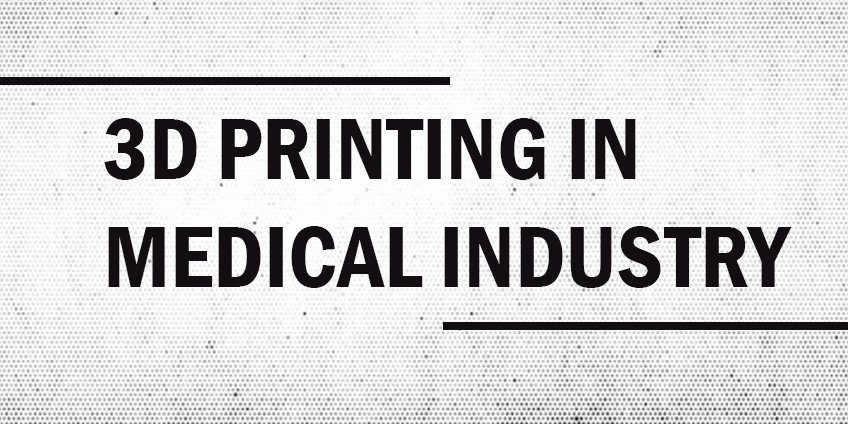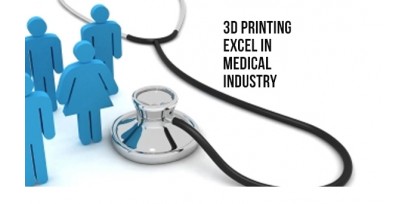3D Printed Human Body Parts
If we assess the advancements of ‘3D printing’ from 1980 till now, it has grown to mammoth from absolutely nothing.
During its advent, it was considered a good way to assist the manufacturing and the production industry. However, never had the researchers considered the industrial 3D printers an option to replace the traditional methods of production.
The 3D printing industry has set up its permanent feet and is advancing fast and wide to spread all over the world. Almost each and every sector has found some or the other way to 3D print their products, instead of manufacturing them using the traditional methods.
One of these important and most beneficiary is the medical sector.
Have you ever thought that you could formulate human body organs at home? No! If someone was in need of an organ replacement, you needed searching a donor center which could help you out.
Now, the researchers have made it possible to print 3D human body organs with the help of large 3D printers and printing materials known as bioinks.
How The Process Takes Wings?
Formulating 3D body organs with the help of 3D printers is known as bioprinting. The complex mixture of human body cells and various other elements is squirted from a printer and it reaches a biologically befitting scaffolding in subsequent layers.
Through this, you could now construct human tissues and even the full human body organs.
Bioprinting is relatively a new concept. However, with the scientific researches and clinical applications, you could now develop some major, fully-functional human body organs too.
What are these? Let us see as you read along:
3D Printed Human Body Organs:
If you are acquainted with the world of 3D printing and bought a 3D printer from some 3D printer store, what actually did you print perfectly till now?
Well, the researchers have made it possible to print various human body parts which are as follows:
•3D Printed Bionic Ears:
The most probable human body organ which has currently been printed is the ears. A team of researchers in Princeton was successful in combining the cartilage tissues with electronics and successfully created a fully functioning ear.
3D printed ears are a bit simpler form of innovation since the cartilaginous tissues (which make the original human ear) do not require a good vascularization level as the other tissues do.
Moreover, the printed ears portrayed some exceptional competencies such as increased hearing ability to receive radio frequency.
•3D Printed Heart Valves:
You have a good idea of how unique your fingerprints are. But did you know that each and every human has a distinct heart and heart valves too?
Surprisingly, the researchers at ‘Henry Ford Innovation Institute’ have found a way to develop human heart and heart valves using the 3D printing technology.
Though, these are not the organs which could replace the natural ones but are still very helpful. Using these ‘3D printed hearts’, the researchers are able to study the working procedures of the organ and how they get influenced by some external agent.
Also, they help in assessing the consequences and risks of taking heart-related or other drugs.
3D Printed Blood Vessels:
The blood vessels run through each and every organ of the body and thus need to be absolutely agile. And this was the major hurdle when it came to 3D printing the human blood vessels.
The previous 3D printed organs lacked in vascularization i.e. the ability to transfer blood etc. through blood vessels and this was found to be a threat to the concerned organ.
However, a team of researchers in Harvard has found a new method to create hollow channels which permit the blood to flow through the organ. This is an essential property of blood vessels and the newest developments have made it absolutely possible.
3D Printed Liver Cells:
‘Organovo’, a renowned medical research center in California was the first organization to develop 3D printed liver tissues.
These human liver tissues are now available commercially and are considered a revolution in the medical industry. Why? Since researchers could find the exact amount of toxicity and effectiveness of a medication which leads to the damage to the human liver.
Also, the innovation helped in reducing the cost and the labor of the researchers who were involved in studying the organ through 2D methods.
3D Printed Human Skin:
The credits to print the most effective and functional 3D printed human skin is offered to ‘James Yoo’ Of ‘Wake Forest School of Medicine’ who successfully treated even the most severe burns using bioprinting.
With this, the printing material was directly sprayed on the burnt site using different layers of skin and hence made it easier to treat the wounds.
Though ‘Jorg Gerlach’ of ‘University of Pittsburgh’ did already create a ‘skin gun’ which sprayed epithelial skin cells on the wounds, this was not too effective to treat the severest wounds.
However, with 3D printing, even the most complicated wound found their absolute treatment and this helped in healing the wound much faster than the natural healing process.
Initially, 3D printers were used to create prosthetics for the ones who needed them. Now, you could print fully-functional body organs.
And though these organs have currently found applications in the research purposes only, it’s not far enough when medical practitioners would be able to replace your damaged or non-functional body organs with newer, better and more cost-effective 3D printed human body organs.
So, is it an exaggeration to term the ‘3D printing technology’ as a revolution to the medical industry?
Image credits: Pixabay


